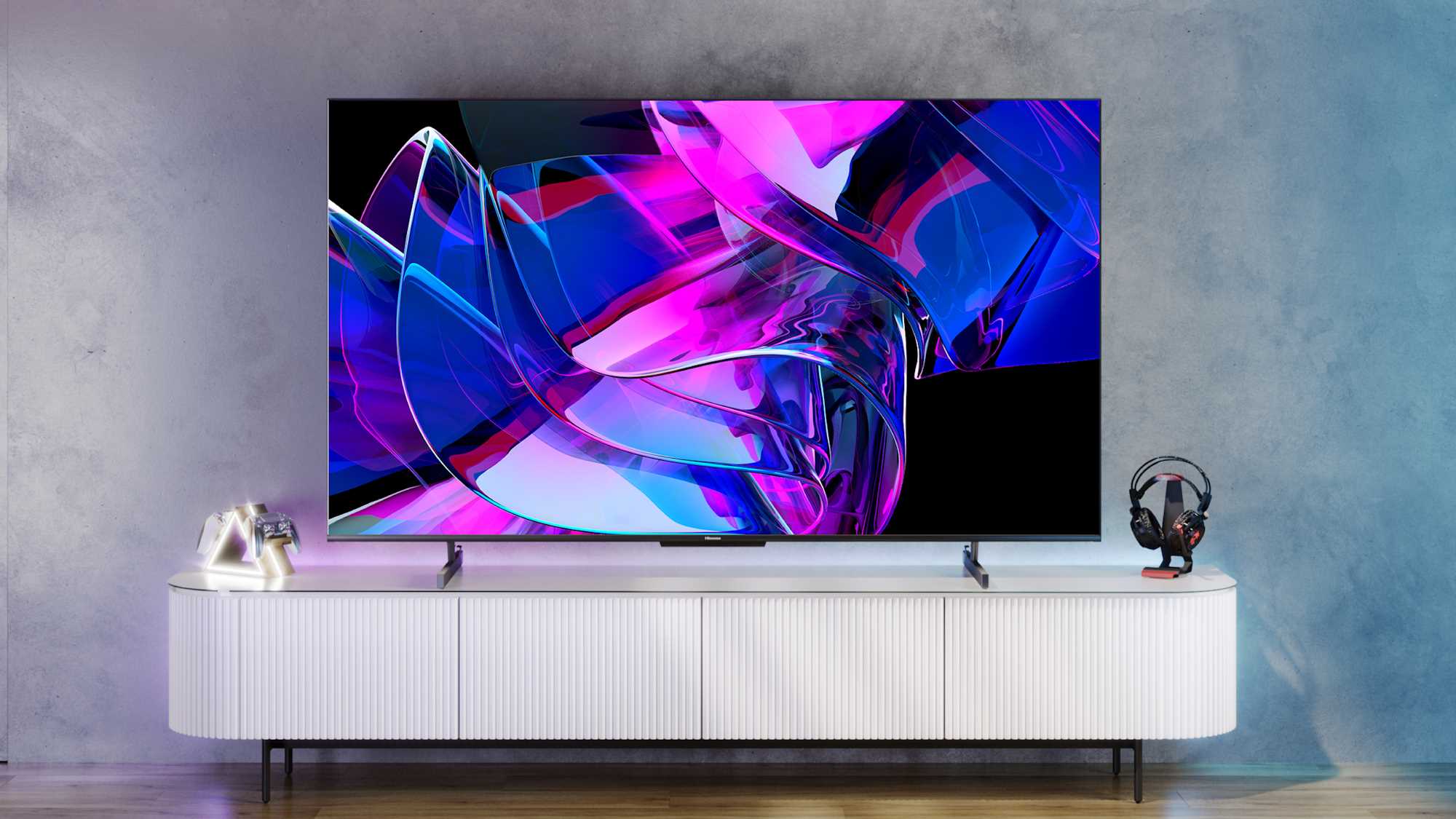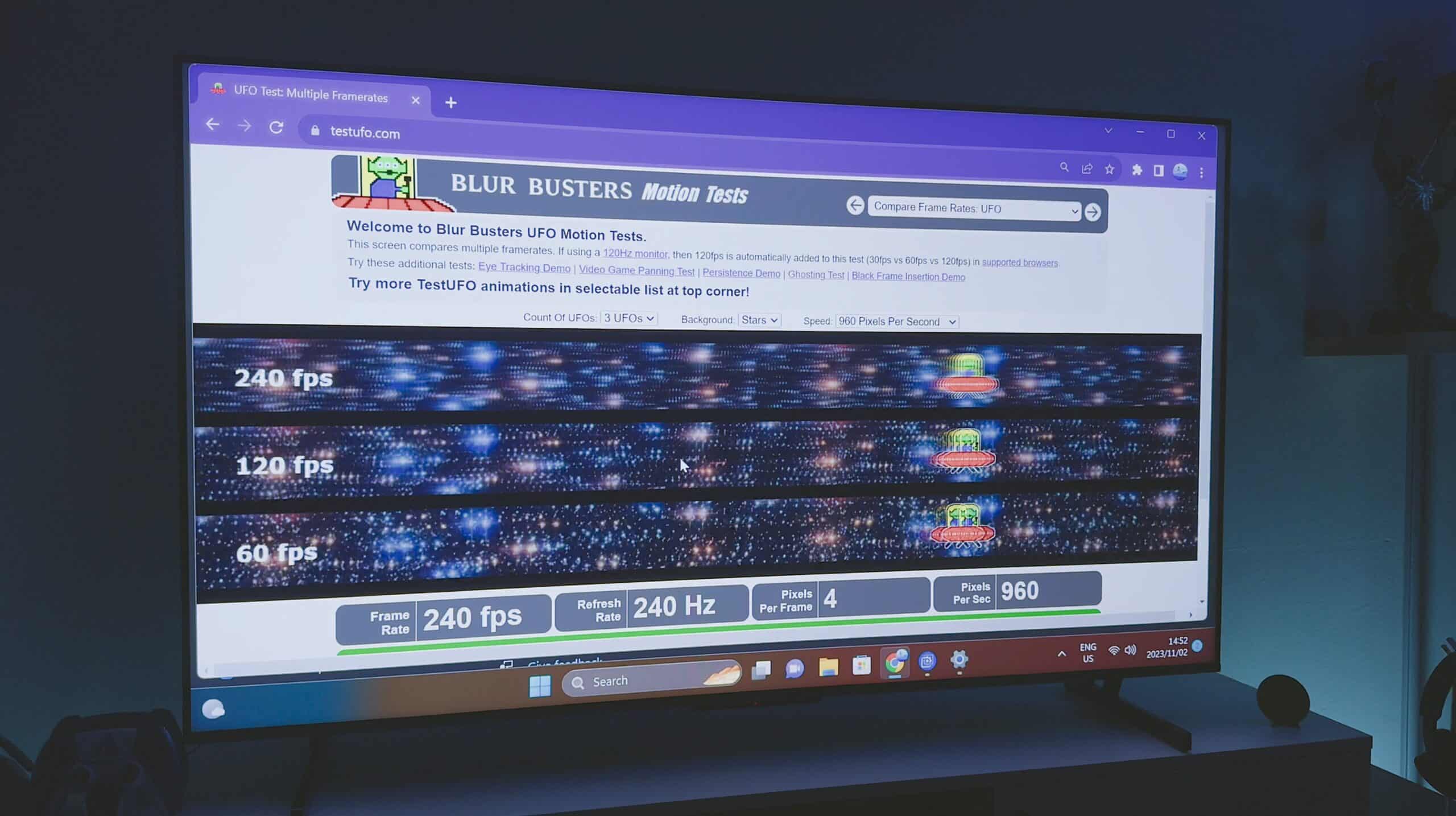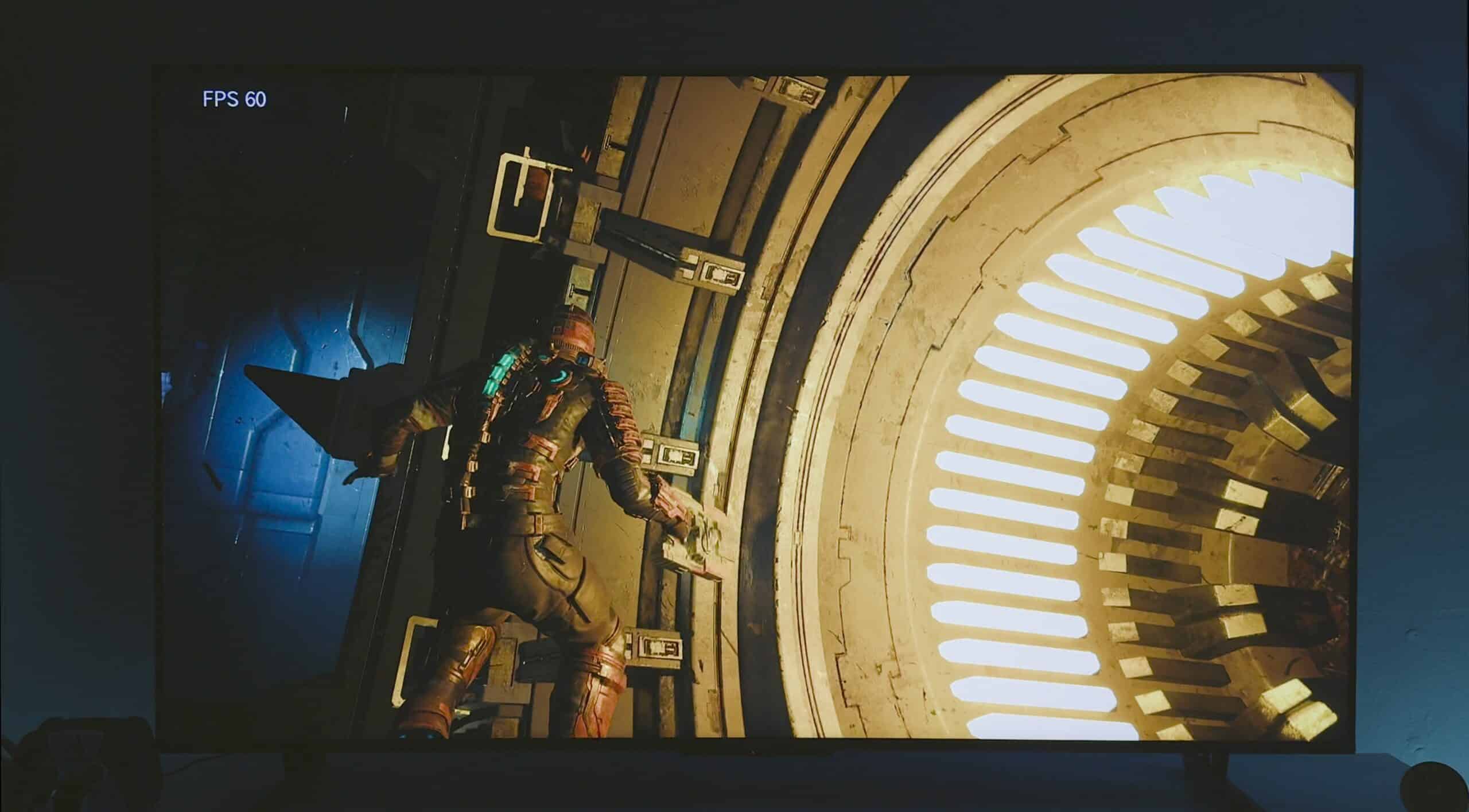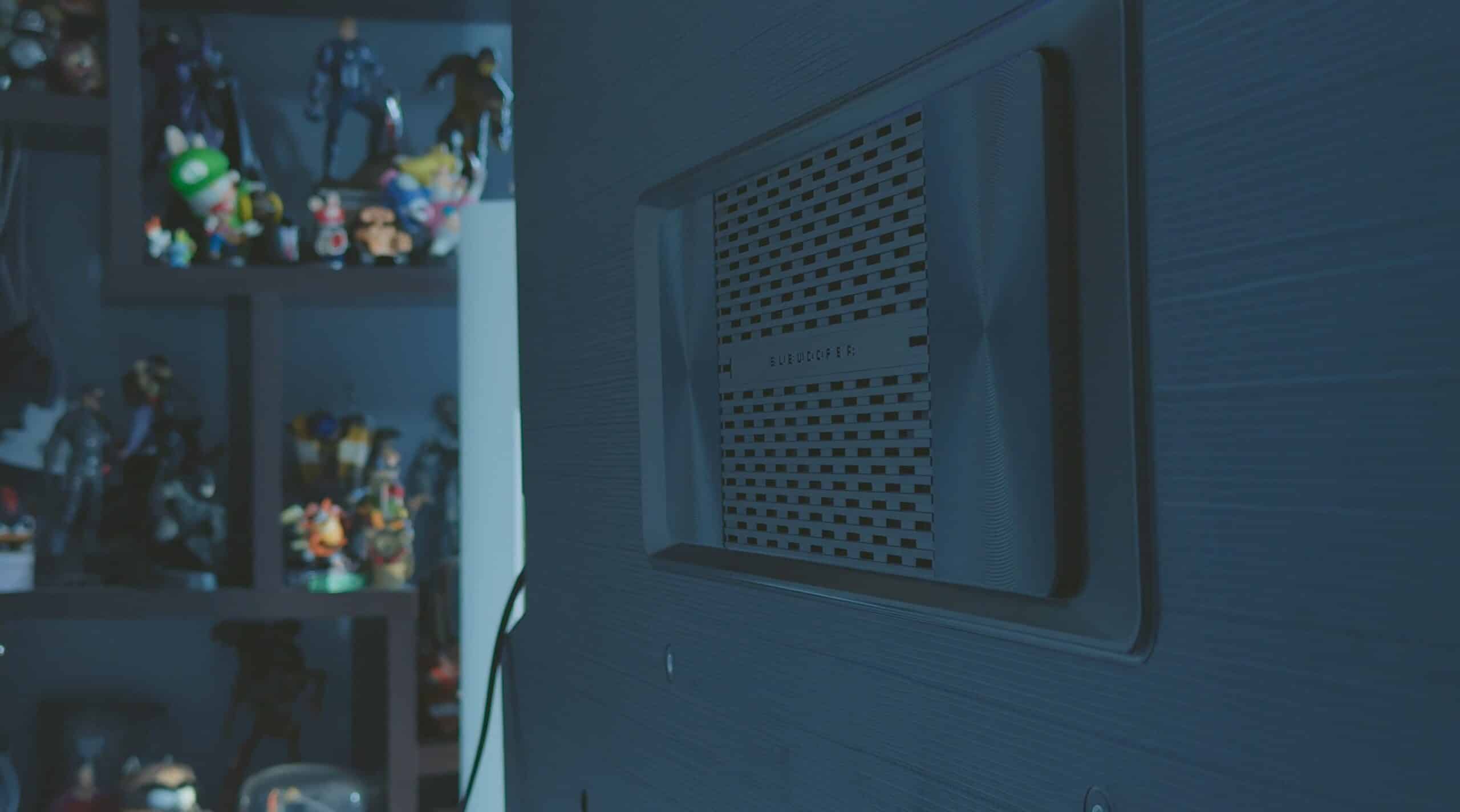The Hisense U7K finally arrived on my doorstep. After covering the U6K which turned out to be a minor upgrade over last year’s U6H model, I couldn’t wait to dive into the U7K. You see, unlike the U6K which was meant to be a new Mini-LED TV redesign, here in SA it was just an ordinary LED TV.
Watch the Hisense U7K review below
Hisense kept the big upgrade for the U7K and it actually feels like a substantial jump over last year’s U7H model. We’re getting Mini-LED tech here with an overclocked panel that can run at 144Hz. There’s also a large focus on gaming with an FPS counter and Gaming Hub overlay. If anything, this TV has been made with gamers in mind.
Of course, I need to clear the air first. This isn’t the same Hisense U7K model you can find in the US. While it bears similar specs, there are a number of differences in this local model which set it apart. But I have to admit that Hisense has nudged closer than ever before to the international standard.
For example, the local Hisense U7K features 384 dimming zones across the 65-inch model. This is exactly the same as the 384 dimming zones on the US version. I was extremely surprised to see this. If there’s one thing we have missed out on across our models our local dimming zones have always been cut down. So again, a big win for local consumers.
A big difference, on the other hand, between the US model and our local model, is the panel technology. The Hisense U7K in South Africa makes use of an IPS panel. There are some advantages to this. For example, it has a higher refresh rate, lower input lag and much better-viewing angles than a VA panel. However, the drawback to this is that IPS panels struggle with increased blooming when combined with Mini-LEDs. This is due to the poor contrast ratio on these panels.
You’ll get blooming across both VA and IPS but it is a bit more pronounced on IPS panels. Blooming also relies on algorithms to control the dimming zones in order to reduce the clouding around bright objects. So it is all dependent on how well Hisense has designed the TV to tackle it. I will get more into the technical stuff later on. Let’s run through the TV first.
First off, the Hisense U7K comes in 55, 65, 75 and 85-inch models. It costs R15,999, R21,999, R29,999 and the 85-inch costs R39,999. These price points also mean that the Hisense U7K is the most affordable Mini-LED TV on the South African market so big ups to the brand.
Unboxing the TV was pretty much the same as a TV unboxing goes. The U7K includes one leg layout here in South Africa meaning you can’t install the TV legs in the middle of the panel like the US version. The legs are flat rectangle designs and look super premium. They are screwed into the base of the TV and include two rubber pads underneath to keep them in place. There are also two clips for cable management.
The legs are 115cm apart so keep that in mind for your soundbar. They are also 31cm long and should fit on most TV stands. The TV itself sits 8cm off the surface and most soundbars shouldn’t cover the display. However, my Samsung QN990B didn’t fit between the legs of the TV. There’s also very little wobble on the TV which is great to see.
The TV design is quite refreshing if you ask me. It looked beautiful on my TV stand and the flat legs are a nice touch. The borders are only 1cm thick and the general TV thickness reached 7.4cm at its thickest portion. This is near the button side of the back. It is larger here to house all the tech while also storing the built-in subwoofer.
On the right, there’s the figure-8 power port and the left-hand size houses all the ports. You’ll find two HDMI 2.1 ports rated at 4K 144Hz and two standard HDMI 2.0 ports. There is an AV-in port, headphone jack, service port and USB Type-A port rated at 5V. There’s also a digital audio out port, ethernet port and another USB port on the backside facing outwards. In case you use those ports.
Generally speaking, the Hisense U7K looks great. The backside is especially nice to look at thanks to the included subwoofer. The metallic rings, which are just actually plastic, also look clean. Even if you’re never going to see them.
Of course, our Hisense U7K runs VIDAA and the operating system now feels fully complete thanks to the included Disney+ app. I need to mention before getting into anything else that our Disney+ app on VIDAA only runs at 1080p, features no Dolby Vision or HDR and no surround sound codes support at all. It is pretty sad. Hopefully, it will improve.
Regardless, VIDAA does everything now and it feels right. Sure, the freedom to install your own apps isn’t a thing here but if you’re not worried about that, VIDAA is now the most complete TV operating system around. Sigh…. it is nice to finally say that.
Getting around the TV is as expected, simple and snappy. The included remote on the TV isn’t anything different to every other Hisense TV around but it works. You don’t have to sign up for a VIDAA account or sign into one. You can just jump straight into your apps and gaming if you’re not in the mood.
Jumping into the settings, the Hisense U7K is familiar. You can tweak everything you want to and I jumped right into settings. Due to the IPS and Mini-LED panel combination, you would want to try to make things look a little warmer. Mini-LEDs tend to give TVs a sort of blue glow so I fixed that with a Warm 2 temperature. I also calibrated the TV for both gaming and entertainment. Here are the settings I used in case you’re looking for some guidance.
The Hisense U7K includes two new settings – Dark Detail and Gradient. I recommend turning both off if you don’t want to lose the filmmaker’s quality intended for your content. Gradient is especially a strange setting. In some instances, it caused the backgrounds to smooth out and I lost the detail of trees and bricks.
Streaming/TV Settings
- Picture Mode – HDR Custom/Dolby Vision Custom (Dolby Vision IQ if you want the filmmaker’s intended experience)
- Local Dimming – High
- Backlight – 100
- Automatic Light Sensor – Off
- Automatic Colour Temperature – Off
- Brightness – 50
- Contrast – 85
- Colour Saturation – 60
- Sharpness – 20
- Adaptive Contrast – Off
- Ultra Smooth Motion – Off
- Noise Reduction – Off
- MPEG Noise Reduction – Off
- Colour Temperature – Warm 2
- Expert Settings
- Dark Detail – Off
- Gradient – Off
Gaming Settings
When it comes to gaming, I was surprised to see how versatile the Hisense U7K was across both PC settings. For example, you can select the colour gamut and choose from DCI-P3, Adobe RGB, BT.709 and BT.2020. You can also select Auto and Native. I seldom review TVs with this level of freedom when it comes to the colour gamut toggles. There’s also Dynamic Tone mapping available which is great for HDR gaming across supported hardware.
The basic TV settings I used for gaming are as follows. Keep in mind that these often change depending on the situation. I will explain more in a bit.
Gaming
- HDMI Format – Enhanced
- Picture Mode – HDR Standard
- Game Mode – On
- Local Dimming – High
- Backlight – 100
- Automatic Light Sensor – Off
- Automatic Colour Temperature – Off
- Brightness – 50
- Contrast – 80
- Colour Saturation – 60
- Sharpness – 15
- Adaptive Contrast – Disabled
- Ultra Smooth Motion – Disabled
- Clear Motion – Off
- Noise Reduction – Disabled
- MPEG Noise Reduction – Disabled
- Colour Temperature – Warm 2
- Expert Settings
- Colour Gamut – Auto
- Dark Detail – Off
- Gradient – Off
- Dynamic Tone Mapping – On
- Dark Detail – Off (on if you’re playing competitive games on dark maps)
- High Refresh Rate Mode – On
Gaming High Refresh Rate Mode
One of the big features of the Hisense U7K is its High Refresh Rate Mode. It allows the TV to run from 120Hz to 144hz and even 240Hz. I had issues getting 4K 144Hz working on my PC. But from what I know, it is a common bug with NVIDIA GPUs. AMD GPUs, on the other hand, don’t have this issue. I was, however, able to get 1440p 144Hz working and 1080p 240Hz working.
I was taken aback a little at how well this feature worked. You’ll need a PC, of course, but it works very well. I found that simply changing the settings under Display on Windows 11 triggered the high refresh rates to appear in Advanced Graphics. I could then switch between 144Hz at 1440p and 240Hz at 1080p. The settings also kept local dimming enabled at the same time. I was expecting it to get disabled.
There’s also a really cool Game Menu that is easily accessible by pressing one button on the control. This brought up an overlay that showed the current frame rate, HDR output and whether or not VRR was enabled. I could also toggle on an FPS counter, change the brightness and turn off and on Dark Detail – the setting you’ll use for competitive gaming. My only issue is that the FPS counter overlay was inconsistent and didn’t show all the time. The menu would say it was enabled but it wasn’t on the screen. So PC gaming on the Hisense U7K hits it out of the park.
Console gaming is also great. I didn’t have the FPS counter issue on my PS5. It showed the entire time. Input lag on 4K 60Hz content was measured at 11.4ms and 4K 120Hz content was measured at 3.4ms. It was impressive.
While the Hisense U7K is almost perfect for gaming, I had a few issues. The TV was very dark and dull with Automatic Tone Mapping disabled. I had to keep it enabled the entire time. It would also disable itself when I closed a game, had VRR enabled and changed refresh rates on PC. I had to constantly go back and forth in settings to enable it.
VRR also gave me mixed results with local dimming. When I had the feature enabled on PS5, local dimming was turned on but stuck on “High”. It was obviously enabled and I could see the difference in panel brightness. However, when I enabled FreeSync on the TV settings, it disabled local dimming. So VRR kept it stuck on High, when enabled on the PS5 but the Freesync setting on the TV turned it off. Even when the Game Menu showed VRR was on when Freesync was disabled, local dimming worked. I was incredibly confused how this all worked. I would stick to using VRR only on the console-end and leave the FreeSync setting disabled if you want local dimming at the same time.
But the general picture quality on the Hisense U7K is rather superb be it gaming or watching TV. When calibrated and tweaked, it looks wonderful. The specular highlights across HDR content pop and pumping up the saturation a bit makes this look even better. It takes time to get this to where it needs to be. Don’t just accept it as is when you open the box.
The TV also gets decently bright thanks to the Mini-LEDs. I measured 510 nits of peak brightness in a 100% window. It is punchy and vibrant.
Local dimming is, of course, a hit or miss depending on the content you’re watching. You’ll definitely notice bloom if you’re in a dark room but the TV does a great job reducing this as much as possible. It is what it is. Unless you’re going the OLED route, blooming is just part of the package.
Viewing angles on the Hisense U7K are better than expected. The IPS panel does a great job here but you have to consider the increased blooming when viewing the TV from an angle too. So in one way, it is great but if you’re watching dark content, the side of the TV is not the best place to sit. It is a good and bad thing here. Great viewing angles but a lot of bloom from the side.
The panel is also not very reflective which is great news for bright rooms. It is likely one of the best finishes I have seen on a display to date making it incredibly versatile for all setups.
As for the sound, it is decent. The included subwoofer definitely helps give the sound a little kick here and there but it still all sounds one-dimensional. You’ll definitely want to upgrade this to a bigger speaker system.
Okay, so I honestly went into the Hisense U7K review not expecting much. After the minor upgrade on the U6K, I expected the same thing here but I am impressed with what Hisense has done here. This is a very good TV. Its gaming features are especially a selling point.
I am a little annoyed by the local dimming and VRR confusion considering this was an issue back in 2018 and shouldn’t be an issue now. Almost every TV brand has found a way around this so Hisense needs to follow suit. Things should not be this confusing. The disabling of Automatic Tone Mapping is also incredibly frustrating.
For its asking price, this TV far exceeds what I expected. It does almost everything, pretty well. It isn’t a master of anything, don’t get me wrong but if you’re looking for a robust TV, this should be up there on the top of your list. I think most importantly, we need to commend Hisense for finally delivering a product that almost matches the international standard. I can’t wait to see where we go from here.
Find out more about the Hisense U7K on the official site here.
Summary
The Hisense U7K is the TV we have been waiting for in South Africa and other EMEA regions. It is feature-packed with similar specs to the United States model. It includes the same local dimming zones, punchy and vibrant mini-LED tech and some pretty impressive gaming features.

















5 Comments